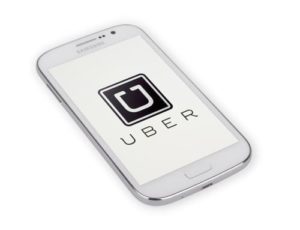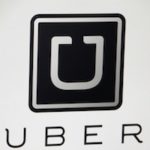What Healthcare Can Learn From Uber
[Guest Post by Dr. Paul Rosen]
 For the past two months, I have been taking Uber cars around Delaware when I go to the train or to the airport. I have taken about 10 rides and every one has been a pleasurable experience.
For the past two months, I have been taking Uber cars around Delaware when I go to the train or to the airport. I have taken about 10 rides and every one has been a pleasurable experience.
The drivers are friendly, the cars are clean, the car arrives in under five minutes and the cost is half the price of the standard fare. I don’t have to worry about cash as everything is taken care of with Apple pay. Basically, the ideal experience has been designed.
Whenever I ride Uber, I ask the driver how they like it. Most of the drivers rave about the experience. They value the flexibility, the low entry cost, and their ability to be their own boss due to the technology. Even if they have to work extra hours to make more money, the drivers want to be in control of their own work schedule.
Uber has designed a system where not only the rider enjoys the ideal experience, but the driver also enjoys the interaction. If Uber had only focused on the rider experience, it would not be the $62 billion company it is today. They recognized that all the stakeholders in the ecosystem needed to win to be successful.
How would the Uber-experience benefit healthcare?
How are we doing in healthcare in terms of using design thinking to create exceptional experiences for both patients and healthcare professionals?
On the patient side, unfortunately, less than five percent of hospitals receive a 5-star rating on HCAHPS patient satisfaction surveys. On the physician side, Mayo clinic’s latest report on physician burnout shows that over half of all physicians have lost the joy of practicing medicine. This would not be a design system that Uber would endorse.
Mayo views a burned-out physician as an impaired physician. The quadruple aim describes that a burned-out physician will not be able to deliver population health-driven quality, cost reduction or patient experience. One of the factors driving the physician burnout phenomenon is loss of autonomy.
When a physician gets a notice from school that their 5-year-old will be in the school play in two weeks, that physician is typically locked into a clinic or surgical schedule. When a physician has their teen athlete make the playoffs, often the physician has to miss the game due to patients booked months in advance.
The Just-in-Time Model
Patients, on the other hand, would enjoy just-in-time scheduling. Cleveland Clinic booked one million same-day appointments last year, demonstrating that patients also value flexible scheduling.
Uber drivers get paid more when customer demand rises, during rush hour for example. Perhaps doctors should be incentivized to deliver care when patients want it: nights, weekends, after work and after school. The old scheduling ways of booking appointments and surgeries months in advance are outdated.
Uber knows that disengaged drivers will not be able to deliver a high-quality experience to their riders. Uber leverages technology to ensure they get the results they want.
Ratings, reviews and the Uber experience...
 After I completed an Uber ride in Boston where the driver was not particularly friendly, I submitted my review on my smartphone: 3-stars. Within minutes, I received an email from Uber apologizing for the gap in service and asking for more detail.
After I completed an Uber ride in Boston where the driver was not particularly friendly, I submitted my review on my smartphone: 3-stars. Within minutes, I received an email from Uber apologizing for the gap in service and asking for more detail.
Uber knows their business depends on the user experience, and when there is a gap in service, they jump on that opportunity to learn more, and to try and correct it.
Uber has a model where the customer and the driver are thrilled with a data based, technology-driven ecosystem that values just-in-time scheduling and superior service.
Would patients like to schedule their appointments and surgeries from their smartphones on the same day during convenient times that work for them?
Would physicians like to make it to their child’s school play, sports tournament, and better serve their patients?
Thank you Uber for showing us in healthcare what is possible. Now it is time for us to redesign the ecosystem.
See how Healthcare Success transforms doctor marketing by generating exposure and increasing qualified leads!
Your comments are welcome. Please let us know what you think.








